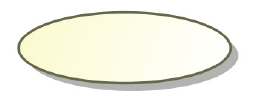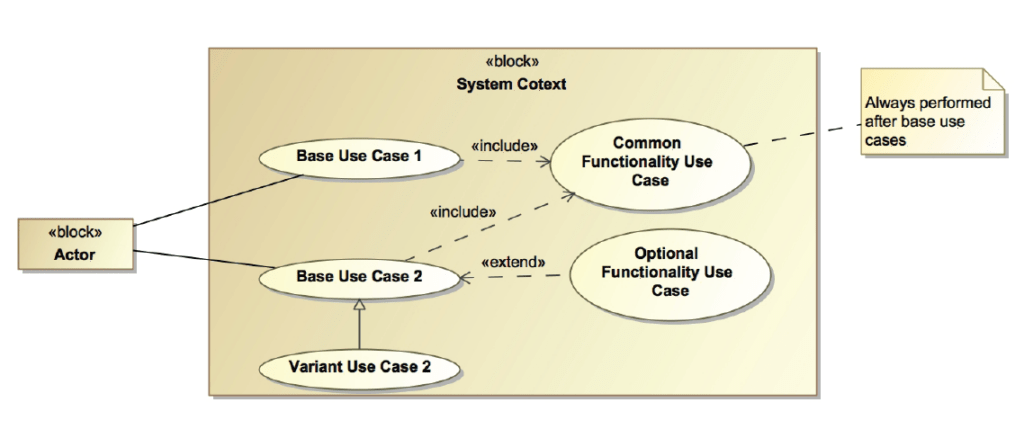Use Cases are an initial step in the system development process to help define the behavior of a system or program. This is generally accomplished by eliciting stakeholders about their needs with a Use Case diagram.
Use Case Diagram Primary Elements
The primary elements utilized on a Use Case Diagram are Actors, Blocks, or Use Case Objects. Understanding when and where to use each of these elements is key for developing comprehensive use case diagrams.

An actor represents someone or something that has an external interface with a system. The name of an actor conveys a role played by a person, an organization, or another system when it interacts with a system.
A Block is a modular unit that describes the structure of a system or element. It may include both structural and behavioral features, such as properties and operations.


A Use Case object describes the expected functionality of a system.
Relationships for Use Cases
On a Use Case Diagram, Actors may interact directly or indirectly with the system of interest. The relationships created between actors and use cases represent the communication that occur. The four relationships that are primarily used on Use Case Diagrams are Communication, Include, Extend and Generalization.
A communication path represents an association between two Deployment Targets. It connects actors to use cases.


An include relationship identifies a common functionality that is shared among multiple use cases and always performed as part of the base use case.
An extend relationship provides an optional functionality, which extends the base use case at defined extension points under specified conditions.


A generalization relationship provides a way to specify variants of the base use case.
Actor Roles
There are two different roles for an actor, primary and secondary. Primary Actors are actors using the system to achieve a goal. Secondary Actors are actors that the system needs assistance from to achieve the primary actor’s goal.
Secondary actors are optional but using them provides more meaning to a use case diagram.


Pingback: Actor - Beyond MBSE
Pingback: Implementing Use Cases - Beyond MBSE